NASA launches robotic explorer to moon (Update)
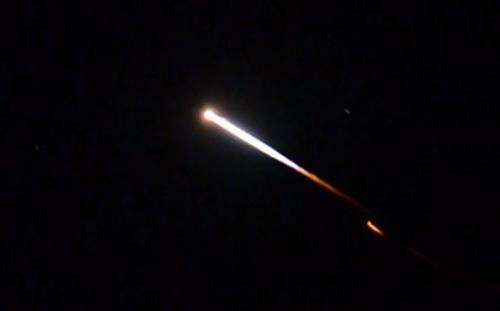
NASA's newest robotic explorer rocketed into space late Friday in an unprecedented moonshot from Virginia that dazzled sky watchers along the East Coast of the U.S.
But the LADEE spacecraft quickly ran into equipment trouble, and while NASA assured everyone early Saturday that the lunar probe was safe and on a perfect track for the moon, officials acknowledged the problem needs to be resolved in the next two to three weeks.
S. Peter Worden, director of NASA's Ames Research Center in California, which developed the spacecraft, told reporters he's confident everything will be working properly in the next few days.
LADEE's reaction wheels were turned on to orient and stabilize the spacecraft, which was spinning too fast after it separated from the final rocket stage, Worden said. But the computer automatically shut the wheels down, apparently because of excess current. He speculated the wheels may have been running a little fast.
Worden stressed there is no rush to "get these bugs ironed out."
The LADEE spacecraft, which is charged with studying the lunar atmosphere and dust, soared aboard an unmanned Minotaur rocket a little before midnight.
"Godspeed on your journey to the moon, LADEE," Launch Control said. Flight controllers applauded and exchanged high-fives following the successful launch. "We are headed to the moon!" NASA said in a tweet.
It was a change of venue for NASA, which normally launches moon missions from Cape Canaveral, Florida. But it provided a rare light show along the East Coast for those blessed with clear skies.
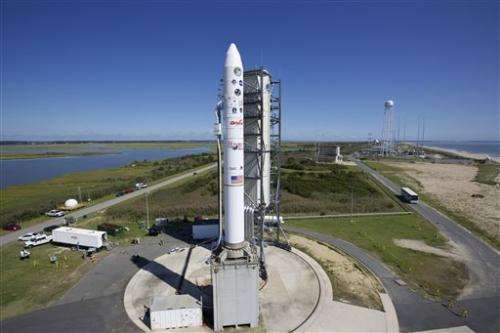
NASA urged sky watchers to share their launch pictures through the website Flickr, and the photos and sighting reports quickly poured in from New York City, Boston, Washington, D.C., Baltimore, New Jersey, Rhode Island, eastern Pennsylvania and Virginia, among other places.
The Lunar Atmosphere and Dust Environment Explorer or LADEE, pronounced "LA'-dee," is taking a roundabout path to the moon, making three huge laps around Earth before getting close enough to pop into lunar orbit.
Unlike the quick three-day Apollo flights to the moon, LADEE will need a full month to reach Earth's closest neighbor. An Air Force Minotaur V rocket, built by Orbital Sciences Corp., provided the ride from NASA's Wallops Flight Facility.
LADEE, which is the size of a small car, is expected to reach the moon on Oct. 6.
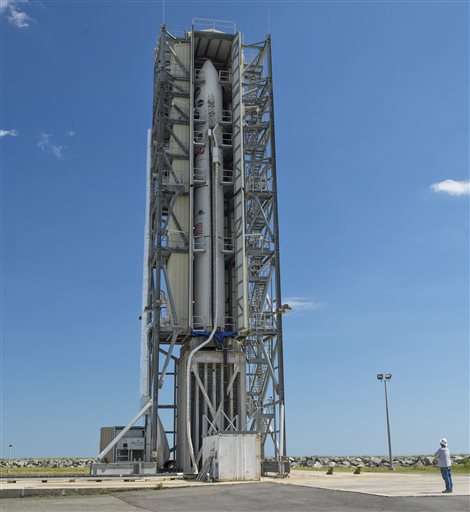
Scientists want to learn the composition of the moon's ever-so-delicate atmosphere and how it might change over time. Another puzzle, dating back decades, is whether dust actually levitates from the lunar surface.
The $280 million moon-orbiting mission will last six months and end with a suicide plunge into the moon for LADEE.
The 844-pound (380-kilogram) spacecraft has three science instruments as well as laser communication test equipment that could revolutionize data relay. NASA hopes to eventually replace its traditional radio systems with laser communications, which would mean faster bandwidth using significantly less power and smaller devices.
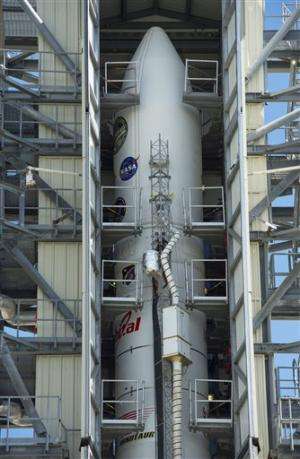
"There's no question that as we send humans farther out into the solar system, certainly to Mars," that laser communications will be needed to send high-definition and 3-D video, said NASA's science mission chief, John Grunsfeld, a former astronaut who worked on the Hubble Space Telescope.
It was a momentous night for Wallops, which was making its first deep-space liftoff. All of its previous launches were confined to Earth orbit.
"It was just a beautiful evening," Grunsfeld said.
NASA chose Wallops for LADEE because of the Minotaur V rocket, comprised of converted intercontinental ballistic missile motors belonging to the Air Force. A U.S.-Russian treaty limits the number of launch sites because of the missile parts.
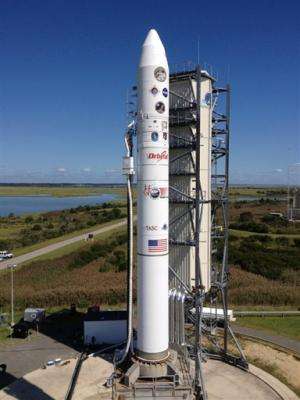
All but one of NASA's previous moon missions since 1959, including the manned Apollo flights of the late 1960s and early 1970s, originated from Cape Canaveral. The most recent were the twin Grail spacecraft launched almost exactly two years ago. The military-NASA Clementine rocketed away from Southern California in 1994.
Wallops will be back in the spotlight in less than two weeks. The Virginia-based Orbital Sciences will make its first delivery to the International Space Station, using its own Antares rocket and Cygnus capsule. That commercial launch is scheduled for Sept. 17.
More information:
NASA: www.nasa.gov/mission_pages/ladee/main/index.html
Orbital Sciences Corp.: tinyurl.com/n6jtpcm
Lunar and Planetary Institute: www.lpi.usra.edu/lunar/missions
© 2013 The Associated Press. All rights reserved.



















